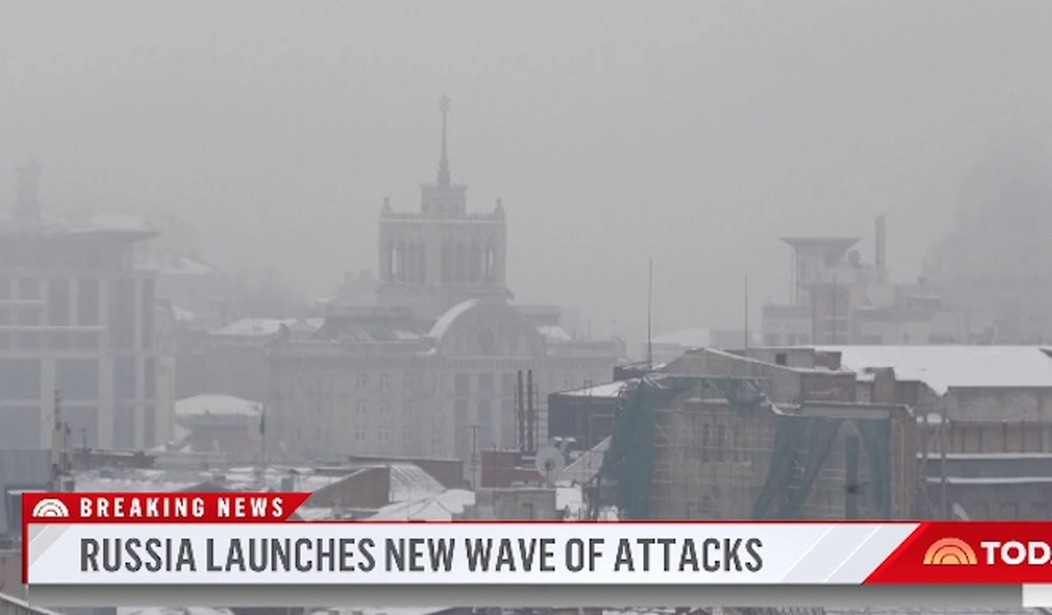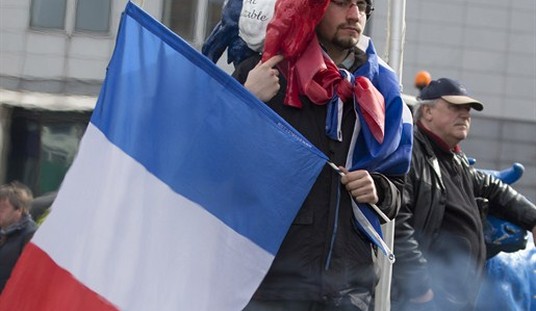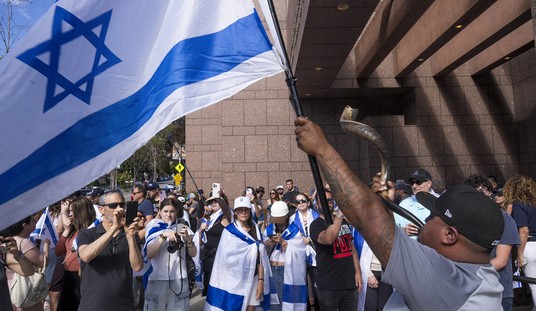Russian warning about “unpredictable consequences” didn’t deter the US from moving forward on delivering Patriot systems to Ukraine. Instead, Vladimir Putin apparently attempted to beat the West to the punch in Kyiv. Russian forces threw dozens of missiles at the capital, but residents there took it largely in stride:
Russia launched a massive new wave of missile strikes across Ukraine, clouding the skies in Kyiv and forcing people underground.
“It’s kinda making you scared,” one person said.
“You get used to it,” another said. @ellisonbarber joins us on the ground with the latest. pic.twitter.com/R5ghI6kQne
— TODAY (@TODAYshow) December 16, 2022
One reason they could take it in stride is that existing air defenses proved remarkably reliable. At least according to the Ukrainians, only about 10% of the Russian missile barrage got through it, even though Russian strategic bombers got used for the first time in such an effort:
Kyiv survives one of the most massive missile attacks by Russia since the start of the invasion.@willripleyCNN is on the ground with more: pic.twitter.com/QnjxRUAsH4
— CNN This Morning (@CNNThisMorning) December 16, 2022
Russian forces launched at least 60 missiles across Ukraine on Friday, according to officials who reported explosions in at least four cities, including Kyiv. At least two people were killed by a strike on a residential building in central Ukraine, where a hunt was on for survivors.
Electricity and water services were interrupted in Kyiv and in Kharkiv, Ukraine’s second-largest city. Thousands of people sought shelter in subway stations deep underground during the bombardment.
The Kyiv city administration said the capital had withstood “one of the biggest rocket attacks” launched by Russian forces since they invaded Ukraine nearly 10 months ago. The administration said Ukrainian air defense forces shot down 37 of “about 40” missiles that entered the city’s airspace. One person was injured, it said. …
Ukrainian Air Force spokesman Yurii Inhat told Ukrainian TV that more than 60 missiles had been fired by Russian forces, but it wasn’t immediately clear how many missiles the Ukrainian army managed to intercept.
Ihnat said Russia had fired cruise missiles from positions in the Black Sea and used bomber aircraft as part of an effort to “massively distract the attention of the anti-aircraft defense, keeping it in tension.”
With this in mind, one has to wonder why the Russians have seized on the Patriot system transfers, other than propaganda value. The HIMARS artillery systems are much more of a threat to Russian forces; they are actual offensive weapons. The Patriot system is entirely defensive, used to negate artillery and missile fire. It was the HIMARS transfers that made the Ukrainian counteroffensive much more strategically and tactically effective. All the Patriot systems will do is to negate Russian attacks on civilian populations, and even then only incrementally over their currently effective anti-aircraft systems.
The reason those Patriot transfers matter, however, is that Putin wants to use terror to force Ukrainians to the negotiating table with concessions in hand. Putin has lately declared his willingness to talk, but only with his troops in place in Donetsk, Luhansk, and Crimea, and likely only to confirm the earlier annexations Putin claimed in those territories. He’s using the attacks on civilians in Kyiv, Kherson, and even Lviv in the west to make Volodymyr Zelensky surrender on Putin’s terms.
ISW offers the same conclusion, and warns that Russia may opt for a new winter offensive to ramp up the pressure for a negotiated victory:
These two military efforts are failing to coerce Ukraine into negotiating or offering preemptive concessions, and Ukraine has retained the battlefield initiative following its two successive counteroffensive operations in Kharkiv and Kherson oblasts. Putin may therefore be setting conditions for a third, sequential military effort in the likely event that these two efforts fail to secure his objectives by preparing for a renewed offensive against Ukraine in the winter of 2023. Ukrainian Commander-in-Chief Valery Zaluzhny suggested that such an offensive could take place as early as January, in the worst-case scenario, and March, in the best case.[6] Zaluzhny additionally observed that this new offensive could take the form of another mechanized attack against Kyiv from Belarusian territory.[7] As ISW has previously reported, there are a series of observed indicators that suggest that Russian forces may indeed be preparing for a new offensive operation—including the reconsolidation of force compositions along major axes of advance and the movement of heavy equipment to the frontlines.[8]
The winter 2023 timeframe suggested by Ukrainian officials for such a potential offensive is consistent with ISW’s long-standing assessment that the winter will facilitate Ukrainian and Russian offensive operations and is consistent with the current projected timeline for the completion of Russian force generation efforts.[9] Putin announced the beginning of mobilization in late September 2022.[10] Putin stated that Russia fielded 150,000 mobilized men of the initial 300,000 mobilized recruits in Ukraine on December 7—about two months after beginning mobilization—and that 150,000 mobilized men continue to train in Russia to prepare for deployment.[11] The remaining 150,000 mobilized men in training should deploy to Ukraine around February to March 2023 if the training and deployment rate remains uniform and as Putin described. Zaluzhny noted that Russia is currently preparing 200,000 troops for deployment—an expanded estimate which likely incorporates servicemembers from the autumn 2022 conscription cycle who are training alongside the remaining mobilized recruits.[12] The combination of ongoing training efforts for both mobilized recruits and the Fall 2022 conscript class, alongside indications that Russia is preparing for another wave of “partial” mobilization, indicate that Russia is trying to generate the combat capability for a renewed offensive in the early months of 2023.[13]
Russia may be running out of time and resources for this kind of effort, winter or otherwise. ISW also notes that their officer corps has sustained disproportionate losses, forcing Russia to find retired officers to send to the front:
The Russian officer corps continues to suffer losses in Ukraine. The Ukrainian General Staff reported that Russian forces are replenishing their operational-tactical command with retired officers and those released from reserve due to heavy officer losses.[51] ISW has previously reported on the officer-cadre shortage in Russian forces due to losses on the Ukrainian frontlines, which far exceeds Russian forces’ cumulative losses over 10 years of Russian operations in Chechnya.[52] ISW assesses that this practice will continue to further degrade already-poor command structures within Russian forces.
This will become an acute crisis in any planned new offensive, if it hasn’t already become one. Those types of strategic operations require good communications, expertise among the officer and NCO corps, and enough clarity and experience to make adjustments on the fly when needed. Bringing in retired officers with expertise only in revolt suppression in Chechnya and turkey shoots in Syria would make even experienced units ill-prepared for an offensive against a battle-hardened army rather than rag-tag militias. And since Putin apparently expects to fight this new offensive with 200,000 recently conscripted troops, likely ill-equipped and poorly trained, the disaster potential may well be off the scale.
Small wonder, then, that Putin wants to win through terror what his military is too incompetent to win through a clash of arms that Putin initiated. It’s also why Putin is sending a few nuclear missiles on a road tour of the Russian interior as a message to the West. All he has left is terror.







Join the conversation as a VIP Member